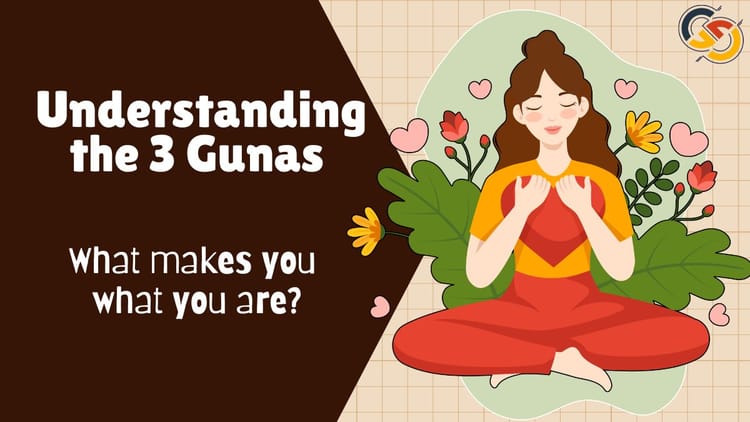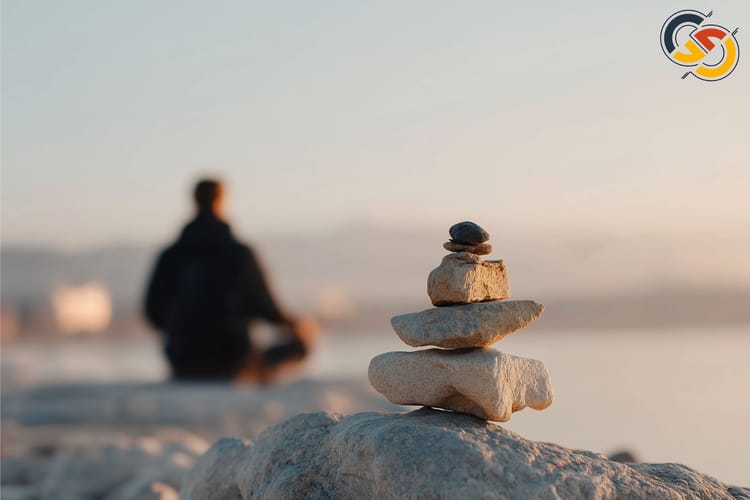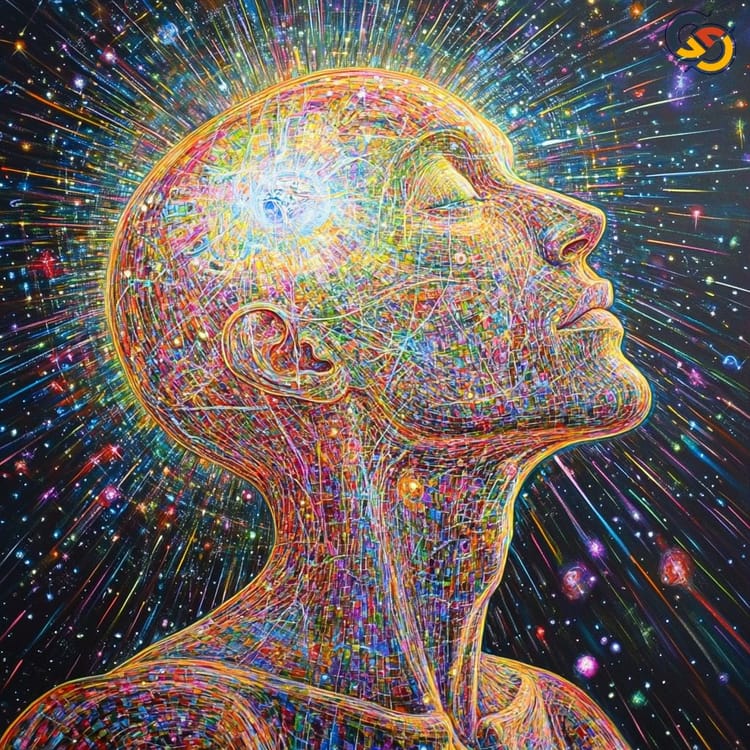The Eternal Question - What is Yoga?
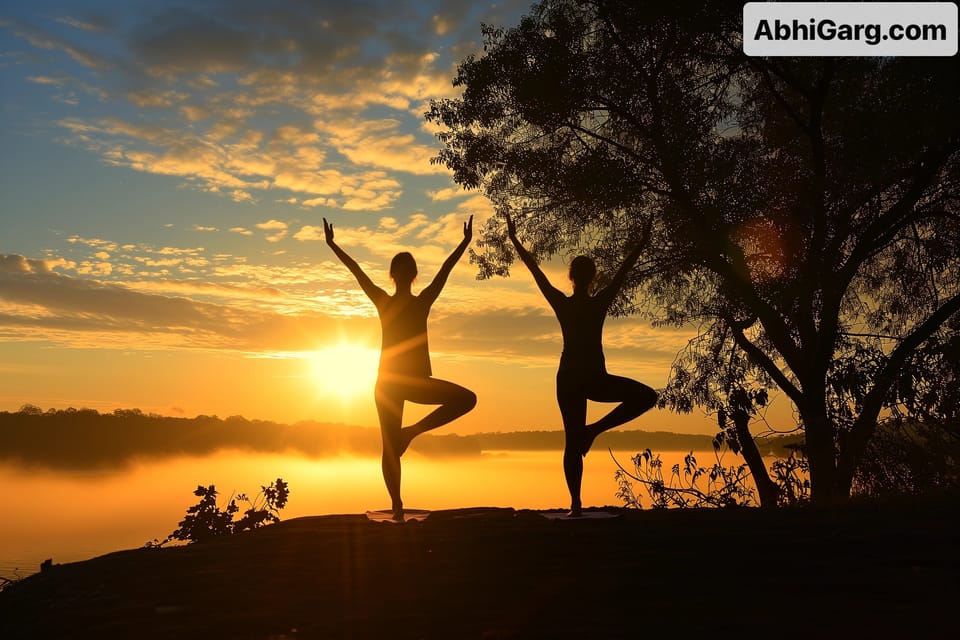
Introduction:
For centuries, yoga has captivated the minds and hearts of people across the globe, sparking a deep curiosity about its nature and purpose. As we delve into yoga, we ask the eternal question: What exactly is Yoga?
Is it merely a set of physical postures, or is a deeper meaning hidden within its folds?
To truly understand yoga, we must explore its rich history and cultural significance. In ancient India, yoga has evolved over thousands of years, intertwining with various philosophical and spiritual traditions. From the Vedic period to the modern era, yoga has undergone many transformations, adapting to the needs and aspirations of each generation.
In this comprehensive article, we will explore Yoga's core principles, the diverse range of practices, and its profound impact on the mind, body, and spirit. Whether you are a seasoned practitioner or a curious beginner, this guide will give you a deep understanding of what yoga truly is and how it can transform your life.
As we navigate the various aspects of yoga, we will discover that it is much more than a physical exercise. It is a holistic approach to well-being, a path to self-discovery, and a means to connect with the universe around us.
The Foundations of Yoga: Understanding Its Core
At its core, yoga is a Sanskrit word that means "union" or "to yoke." This union refers to the connection between the individual self (atman) and the universal self (brahman). Yoga is a practice that aims to harmonize the body, mind, and spirit, ultimately leading to a state of enlightenment or self-realization.
The philosophical underpinnings of yoga can be traced back to various Indian traditions, including Hinduism, Buddhism, and Jainism. The Yoga Sutras of Patanjali, a seminal text in yoga philosophy, outlines the eight limbs of yoga, known as Ashtanga. These limbs serve as a roadmap for spiritual growth and include:
1. Yama (ethical principles)
2. Niyama (personal observances)
3. Asana (physical postures)
4. Pranayama (breath control)
5. Pratyahara (sensory withdrawal)
6. Dharana (concentration)
7. Dhyana (meditation)
8. Samadhi (enlightenment)

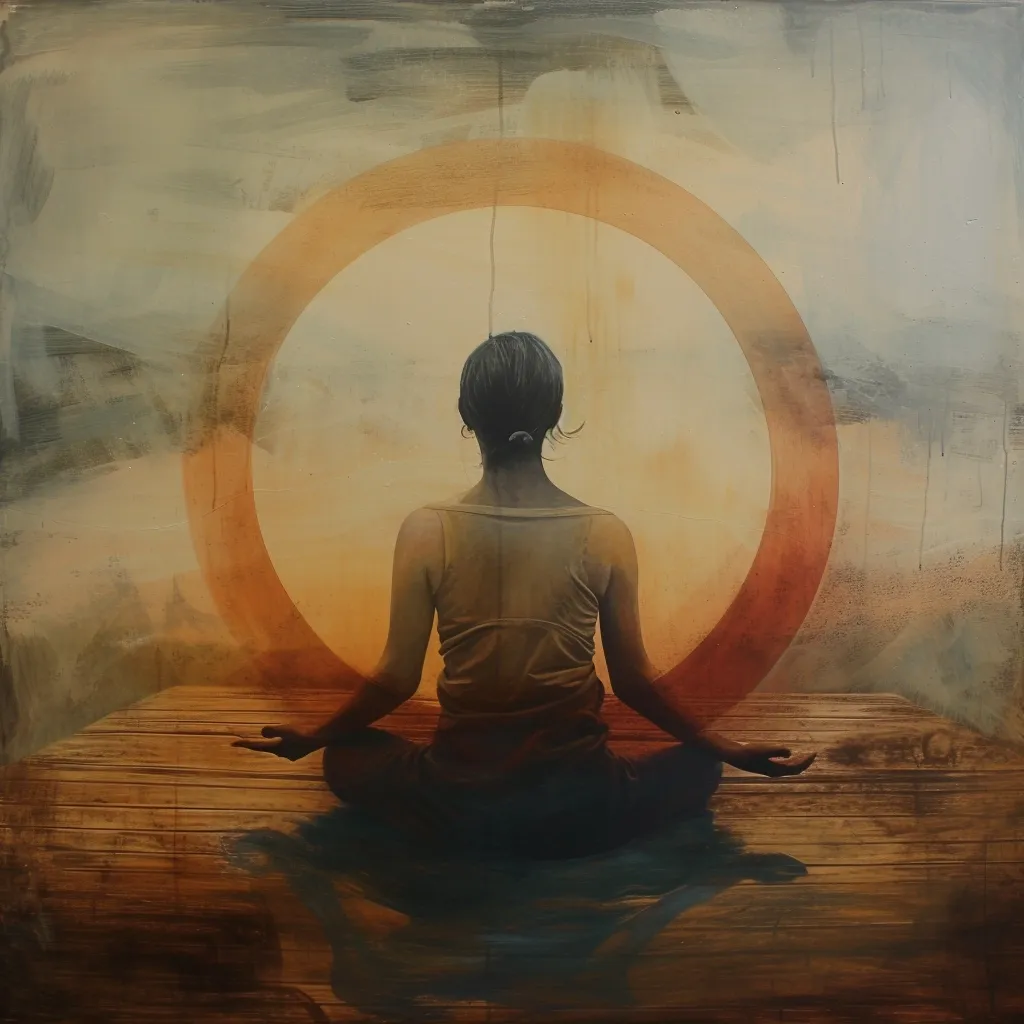

Pranayama, Dharana, and Dhyana might appear the same to an observer.
To fully grasp the essence of yoga, it is essential to understand some key terms:
Asanas are the physical postures or poses most people associate with yoga. They are designed to promote strength, flexibility, and balance in the body.
Pranayama is the practice of controlling the breath. Pranayama techniques help to calm the mind, increase vitality, and promote overall well-being.
Yoga Nidra is a state of deep relaxation and meditation. Also known as "yogic sleep," yoga nidra is a powerful technique for reducing stress and promoting inner peace.
Kundalini is a form of spiritual energy believed to reside at the base of the spine. Kundalini yoga focuses on awakening and channeling this energy through the chakras (energy centers) for spiritual growth and transformation.
Understanding these foundational concepts shows that yoga is a multi-faceted practice encompassing physical and spiritual dimensions. As we explore the various types and styles of yoga in the following sections, remember that they all stem from these core principles and aims.
The Many Faces of Yoga: A Guide to Different Practices
Yoga has evolved into diverse practices, each with its unique focus and approach. From the dynamic flow of Vinyasa to the meditative stillness of Yin, there is a style of yoga to suit every preference and need. Let's explore some of the most popular types of yoga:
Hatha Yoga:
Hatha is a general term that encompasses many of the physical practices of yoga. A Hatha yoga class typically combines asanas (postures), pranayama (breathing techniques), and meditation. The pace is generally slower than other styles, making it an excellent choice for beginners or those seeking a more relaxed practice.
Vinyasa Yoga:
Vinyasa, or flow yoga, is a dynamic style that links breath with movement. Poses are sequenced together continuously, creating a fluid and energizing practice. Vinyasa classes can vary in intensity, from gentle to challenging, and may include music to enhance the experience.
Ashtanga Yoga:
Ashtanga is a highly structured style of yoga that follows a set sequence of poses. The practice is divided into six series, each progressively more challenging than the last. Ashtanga is known for its vigorous, physically demanding nature and is often favored by experienced practitioners seeking a disciplined practice.
Kundalini Yoga:
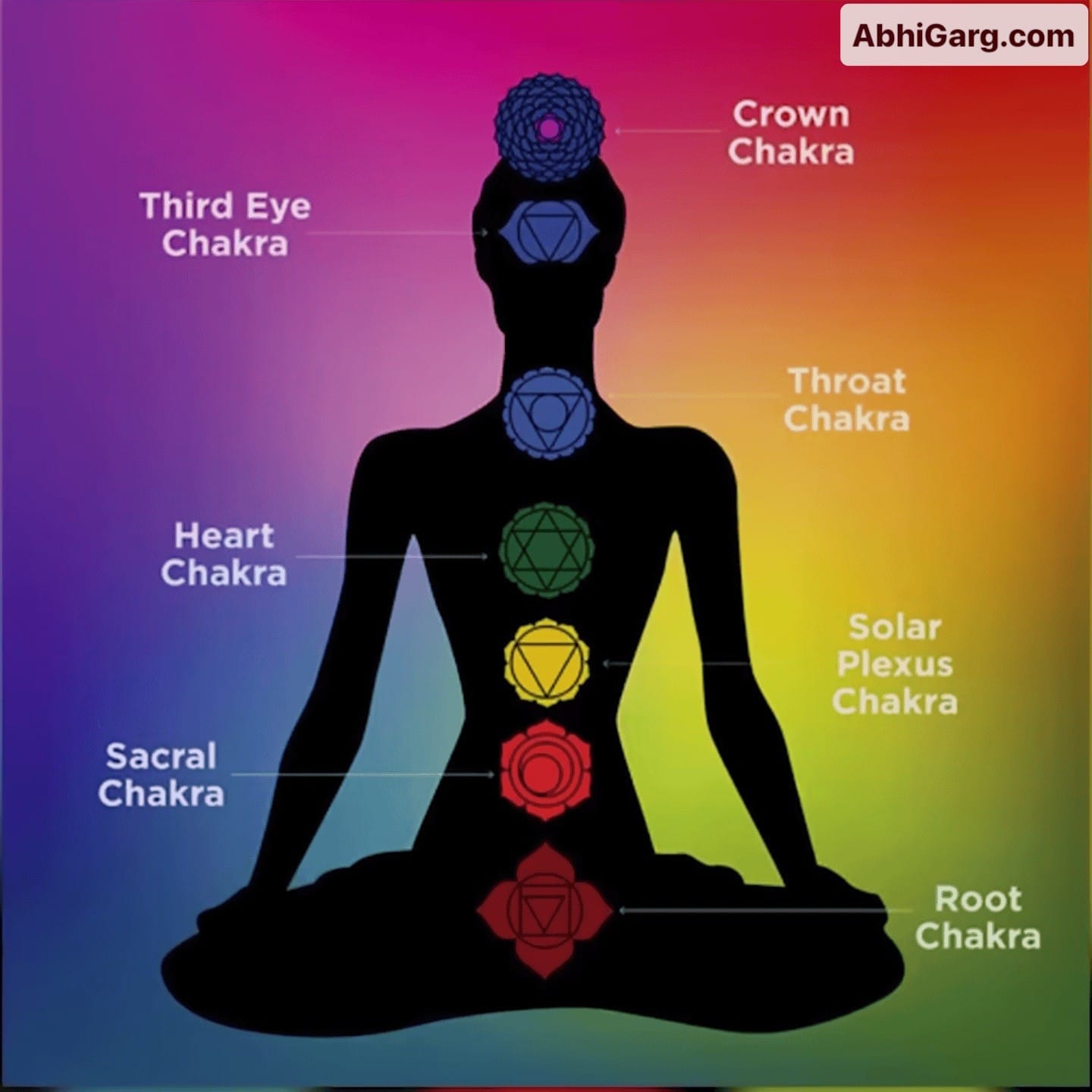
Kundalini yoga is a spiritual practice that aims to awaken the kundalini energy believed to reside at the base of the spine. A typical Kundalini class includes chanting, dynamic breathing techniques, and specific postures designed to stimulate energy flow through the chakras. This style is known for its intense, transformative nature.
Kundalini Yoga - the most potent form of Yogic energy.
Kundalini energy is a very powerful force, and one must be mentally and spiritually ready to experience it; otherwise, it becomes unmanageable.
The conscious aim cannot be to awaken Kundalini Energy rapidly.
Yin Yoga:
Yin yoga is a slow-paced, meditative practice that targets the connective tissues (ligaments, joints, bones, and deep fascia) rather than the muscles. Poses are held for several minutes, allowing the body to relax and release tension deeply. Yin yoga is an excellent complement to more active styles and is suitable for all levels.
In addition to these well-known practices, there are many lesser-known styles worth exploring:
Somatic Yoga:
Somatic yoga focuses on gentle, mindful movements that promote body awareness and release chronic tension. This practice particularly benefits those with stress, pain, or limited mobility.
Tantric Yoga:
Tantra yoga is a spiritual practice that seeks to awaken and harness the divine energy within the body. This style incorporates various techniques, including asanas, pranayama, meditation, and chanting, to facilitate spiritual growth and self-realization.
Restorative Yoga:
Restorative yoga is a gentle, passive practice that uses props (blankets, bolsters, and blocks) to support the body in long-held poses. This style is designed to promote deep relaxation, reduce stress, and cultivate a sense of inner peace.
Yoga Therapy:
Yoga therapy applies yogic principles and practices to address specific health concerns or conditions. A yoga therapist works one-on-one with clients to develop personalized plans that may include asanas, pranayama, meditation, and lifestyle recommendations.
Chair Yoga:
Chair yoga is a modified practice that makes yoga accessible to those with limited mobility or who cannot practice on the floor. Poses are adapted to be performed while seated or standing with the support of a chair, making it an inclusive option for seniors, pregnant women, or individuals with disabilities.
Whether you are drawn to the physical challenge of Ashtanga, the spiritual depth of Kundalini, or the restorative power of Yin, there is a style that will resonate with your unique needs and aspirations. The following sections will delve deeper into some of these practices and their specific benefits.
The Heat Within: What is Hot Yoga and Its Variants?
Hot yoga, as the name suggests, is practiced in a heated room, typically between 85-105°F (29-41°C) with increased humidity. The most well-known form of hot yoga is Bikram yoga, developed by Bikram Choudhury in the 1970s. A Bikram class comprises 26 postures and two breathing exercises in a room heated to 105°F (41°C) with 40% humidity.
The heat in hot yoga serves several purposes:
1. Increased flexibility: The warm environment allows the muscles to relax and stretch more easily, enabling practitioners to move deeper into postures.
2. Detoxification: Profuse sweating during hot yoga is believed to help flush toxins from the body, promoting a sense of purification and renewal.
3. Cardiovascular challenge: Practicing in a heated room raises the heart rate, providing a more intense cardiovascular workout.
4. Mental focus: Combining heat and challenging postures requires intense mental concentration, helping to quiet the mind and cultivate mindfulness.
While Bikram yoga is the most well-known form of hot yoga, there are several other variants, including:
- Hot Vinyasa: A flowing style of yoga practiced in a heated room, often set to music.
- Hot Power Yoga: A vigorous, strength-building practice that combines elements of Ashtanga and Vinyasa, performed in a heated environment.
- Hot Yin Yoga: A slow-paced, meditative practice that holds poses for several minutes in a warm room, targeting the connective tissues.
It is important to note that hot yoga can be physically challenging and may not be suitable for everyone. Practitioners should listen to their bodies and take breaks as needed, staying hydrated throughout the class. Those with certain health conditions, such as high blood pressure or heart disease, should consult their doctor before trying hot yoga.
Hot yoga can offer a unique and transformative experience, promoting physical and mental well-being when practiced with caution and awareness.
Specialty Yoga: From the Fun to the Profound
As yoga continues to evolve and spread across the globe, new and innovative styles have emerged, offering unique experiences for practitioners. From playful and lighthearted practices to deeply spiritual and transformative ones, specialty yoga has something for everyone.
Goat Yoga:
Goat yoga, a trend that has taken the yoga world by storm, involves practicing yoga in the presence of live goats. These friendly animals roam freely around the yoga space, sometimes climbing on practitioners or nuzzling them during poses. While it may seem unconventional, goat yoga is known for its ability to bring joy, laughter, and a sense of connection to nature.
Buti Yoga:
Buti yoga is a high-intensity, dynamic practice that combines elements of yoga, tribal dance, and plyometrics. Set to upbeat music, a Buti yoga class is designed to build strength, increase flexibility, and boost confidence. This style is known for its empowering, body-positive message and ability to create community among practitioners.
Aerial Yoga:
Aerial or anti-gravity yoga involves performing yoga poses while suspended in a hammock or silk fabric hung from the ceiling. This practice allows for a unique experience of weightlessness and decompression, as the hammock supports the body and allows for deeper stretches and inversions. Aerial yoga can help improve flexibility, core strength, and spinal health while providing a playful and creative outlet.
SUP Yoga:

Stand-up paddleboard (SUP) yoga takes your practice to the water, combining the balance challenge of paddleboarding with the mindfulness and flexibility of yoga. Practicing poses on a floating board engages the core muscles, improves balance, and connects you with the natural elements. SUP yoga is a refreshing and invigorating way to experience yoga while enjoying the great outdoors.
Acroyoga:
Acroyoga blends the wisdom of yoga with the dynamic movement of acrobatics and the heartfelt connection of Thai massage. This partner-based practice involves one person (the base) supporting and lifting another person (the flyer) through aerial poses and transitions. Acroyoga cultivates trust, communication, and playfulness between partners while building strength, flexibility, and body awareness.
In addition to these specialty styles, yoga has also been integrated into various lifestyles and settings, such as:
- Yoga for Athletes: Specific yoga practices designed to complement and enhance athletic performance, helping to prevent injuries, improve flexibility, and promote recovery.
- Prenatal Yoga: Modified yoga practices that support the changing needs of pregnant women, promoting comfort, strength, and relaxation during pregnancy and preparation for childbirth.
- Yoga in the Workplace: Corporate yoga programs that bring the benefits of yoga into the office setting, helping employees reduce stress, increase focus, and improve overall wellbeing.
- Yoga for Recovery: Specialized yoga practices that support individuals in recovery from addiction, trauma, or eating disorders, providing tools for self-regulation, emotional healing, and resilience.
As you explore the vast landscape of specialty yoga, remember that the essence of yoga remains the same: to cultivate awareness, presence, and connection. Whether you find yourself laughing with goats, flying through the air, or flowing on the water, each unique experience has the potential to deepen your practice and enrich your life.
Yoga and Its Cousins: Comparing Yoga with Pilates and Other Practices
Yoga is often compared to other mind-body practices, such as Pilates, tai chi, and qigong. While these disciplines share some similarities with yoga, they have distinct features and philosophies. Understanding the differences between these practices can help you choose the one that best aligns with your goals and preferences.
Yoga vs. Pilates:
Pilates is a physical conditioning system developed by Joseph Pilates in the early 20th century. Like yoga, Pilates focuses on breath, alignment, and body awareness. However, there are several key differences between the two practices:
1. Philosophy: Yoga has a rich spiritual and philosophical foundation, while Pilates is primarily a physical fitness system.
2. Movement: Yoga emphasizes static holds and flowing sequences, while Pilates focuses on precise, controlled movements often performed on specialized equipment.
3. Breath: In yoga, the breath guides movement and deepens relaxation, while in Pilates, it activates the core muscles and stabilizes the spine.
Despite these differences, many people find that practicing yoga and Pilates can be complementary, as each discipline targets different physical and mental well-being aspects.
Yoga vs. Tai Chi and Qigong:
Tai chi and qigong are ancient Chinese practices that share some commonalities with yoga. All three disciplines emphasize breath, mindfulness, and the cultivation of life force energy (known as "prana" in yoga and "qi" in Chinese traditions). However, there are also notable differences:
1. Movement: Yoga involves many static and dynamic postures, while tai chi and qigong focus on slow, fluid, and continuous movements.
2. Breath: In yoga, various breathing techniques (pranayama) influence the mind and body, while in tai chi and qigong, the breath is often synchronized with movement to promote the flow of qi.
3. Meditation: While all three practices incorporate elements of meditation, yoga places a greater emphasis on seated meditation and introspection.
Yoga vs. Other Fitness Practices:
Yoga is often compared to other fitness practices, such as strength training, cardiovascular exercise, and stretching. While yoga can improve strength, endurance, and flexibility, it is important to recognize that it is a holistic practice beyond physical fitness. Yoga's emphasis on mindfulness, self-awareness, and inner exploration sets it apart from other forms of exercise.
Many people find that incorporating yoga into a well-rounded fitness routine can be highly beneficial. Yoga can help counterbalance the effects of high-impact activities, improve joint mobility, and prevent injuries. It can also provide a much-needed opportunity for mental relaxation and stress relief amid a busy workout schedule.
The Spiritual Side of Yoga: Bhakti, Karma, Raja Yoga, and Gyana Yoga
While many people associate yoga primarily with its physical practices, the spiritual dimensions of yoga are equally important. Bhakti, Karma, and Raja yoga are three distinct paths that emphasize different aspects of spiritual growth and self-realization.
Bhakti Yoga: The Path of Devotion
Bhakti yoga is the path of devotion, love, and surrender to the Divine. This practice involves cultivating a personal relationship with a chosen deity or God through prayer, chanting, ritual, and service. Bhakti yogis seek to dissolve the ego and merge with the object of their devotion, experiencing a profound sense of unity and unconditional love.
Bhakti yoga includes practices such as kirtan (devotional singing), puja (ritual worship), and japa (mantra repetition). By opening the heart and directing one's emotions towards the Divine, practitioners aim to transcend the limitations of the individual self and connect with the universal spirit.
Karma Yoga: The Path of Selfless Action
What is Karma Yoga?
Karma yoga is the path of selfless action, service, and detachment from the fruits of one's labor. This practice involves performing actions without attachment to the results, offering one's work as a sacrifice to the Divine or for the benefit of others.
Karma yogis seek to purify the mind and heart by letting go of selfish desires and egoistic motivations. By acting with a sense of duty, compassion, and equanimity, practitioners aim to break free from the cycle of cause and effect (karma) and attain spiritual liberation.
Engaging in volunteer work, community service, and acts of kindness without expectation of reward are examples of Karma yoga in practice. By dedicating one's actions to a higher purpose, Karma yogis cultivate humility, generosity, and a sense of interconnectedness with all beings.
Raja Yoga: The Path of Meditation and Self-Discipline
What are the eight steps of Raja Yoga?
Raja yoga, known as Ashtanga yoga, is the path of meditation, self-discipline, and self-mastery. This practice follows the eight-limbed path outlined in the Yoga Sutras of Patanjali, which includes ethical principles, physical postures, breath control, sensory withdrawal, concentration, meditation, and samadhi (enlightenment).
Raja yogis aim to quiet the mind and gain control over the fluctuations of thoughts and emotions. Through regular meditation and self-inquiry, practitioners seek to uncover the true nature of the self and experience a state of pure consciousness.
Pranayama (breath control), Pratyahara (sensory withdrawal), Dharana (concentration), and Dhyana (meditation) are central to Raja yoga.
By cultivating mental clarity, focus, and introspection, Raja yogis aim to transcend the limitations of the ego and realize their true identity as the eternal, blissful Self.
Gyana Yoga: Not just book knowledge
Gyana Yoga, also known as Jnana Yoga, is the path of wisdom and knowledge. It is one of the four main paths of yoga, alongside Bhakti Yoga (the path of devotion), Karma Yoga (the path of selfless action), and Raja Yoga (the path of meditation).
Gyana Yoga is focused on the pursuit of self-realization through the study of scriptures, self-inquiry, and the cultivation of discernment between the real and the unreal. This path emphasizes the importance of understanding the nature of the self and the ultimate reality, often referred to as Brahman in Hindu philosophy.
Practitioners of Gyana Yoga engage in a process of self-reflection, questioning, and contemplation to peel away the layers of ignorance that obscure the true self. They seek to understand the nature of the mind, the ego, and the world around them, ultimately realizing the oneness of all existence.
The practice of Gyana Yoga involves the study of sacred texts such as the Upanishads and the Bhagavad Gita, as well as the cultivation of viveka (discernment) and vairagya (detachment). By developing a keen intellect and a detached perspective, the yogi is able to see through the illusions of the material world and realize the ultimate truth.
Gyana Yoga is considered a challenging path, as it requires a sharp mind, a strong will, and a deep commitment to self-discovery. However, for those who are drawn to the pursuit of wisdom and self-realization, Gyana Yoga offers a powerful framework for spiritual growth and enlightenment.
Many practitioners find that incorporating elements of all four yoga paths into their practice can lead to a more balanced and holistic approach to spiritual growth. Ultimately, yoga's goals are to unite with the Divine (not that we're disconnected), realize one's true nature, and experience a profound sense of inner peace and oneness with all creation.
The Physicality of Yoga: Understanding Asanas and Yoga Flow
Asanas, or yoga postures, are the physical foundation of most modern yoga practices. These postures promote strength, flexibility, balance, and body awareness while preparing the mind and body for deeper states of meditation and self-inquiry.
Types of Asanas:
Asanas can be broadly categorized into several types, each with its unique benefits and challenges:
1. Standing Poses: These postures, such as Tadasana (Mountain Pose) and Virabhadrasana (Warrior Pose), build strength, stability, and grounding in the legs and feet.
2. Balancing Poses: Postures like Vrksasana (Tree Pose) and Natarajasana (Dancer Pose) challenge balance and concentration while cultivating focus and inner stillness.
3. Seated Poses: These postures, such as Dandasana (Staff Pose) and Baddha Konasana (Bound Angle Pose), promote flexibility in the hips, legs, and spine while encouraging introspection and relaxation.
4. Twisting Poses: Asanas like Ardha Matsyendrasana (Half Lord of the Fishes Pose) and Parivrtta Trikonasana (Revolved Triangle Pose) stimulate the digestive system, release tension in the spine, and promote detoxification.
5. Backbends: Postures such as Bhujangasana (Cobra Pose) and Ustrasana (Camel Pose) open the chest, strengthen the back muscles, and energize the body and mind.
6. Inversions: These postures, like Sirsasana (Head stand) and Sarvangasana (Shoulder stand), reverse the effects of gravity on the body, stimulate the endocrine and lymphatic systems, and promote mental clarity and balance.
Sequencing and Yoga Flow:
In addition to practicing individual asanas, many yoga styles emphasize the importance of sequencing and flow. Yoga flow, or vinyasa, is the seamless transition between postures coordinated with the breath.
A well-designed yoga sequence can help warm the body, build heat and energy, and prepare for more challenging postures. Sequences often follow a natural progression, beginning with centering and grounding postures, moving through sun salutations and standing poses, and gradually building to peak postures like backbends and inversions.
As practitioners move through a sequence, the breath serves as a constant anchor, guiding the movement and helping to cultivate a meditative state of mind. The synchronization of breath and movement creates a sense of fluidity, grace, and inner connection, allowing practitioners to experience a sense of unity between body, mind, and spirit.
Power Yoga:
Power yoga is a dynamic, fitness-based approach to yoga that emphasizes strength, endurance, and flexibility. This style emerged in the 1990s and draws from Ashtanga and Vinyasa traditions but often incorporates more athletic and high-intensity movements.
In a power yoga class, practitioners move through a fast-paced, challenging sequence of postures, often set to upbeat music. The focus is building heat, increasing heart rate, and pushing physical limits while maintaining proper alignment and breath awareness.
While power yoga can be an excellent way to build strength, stamina, and mental resilience, practitioners must approach the practice with caution and self-awareness. Listening to one's body, respecting individual limits, and prioritizing proper alignment over depth or speed is essential for a safe and sustainable practice.
Ultimately, whether one is practicing individual asanas, flowing through a sequence, or engaging in a power yoga class, the physical practice of yoga is an opportunity to cultivate mindfulness, self-awareness, and inner connection. By bringing attention to the breath and the sensations within the body, practitioners can use the physical practice as a gateway to deeper states of meditation, self-inquiry, and spiritual growth.
Yoga for the Mind: The Psychological Benefits of Yoga
While yoga is often associated with its physical benefits, such as increased flexibility, strength, and balance, it also offers profound psychological and mental health benefits. Regular yoga practice can help to reduce stress, anxiety, and depression while promoting emotional resilience, mental clarity, and overall well-being.
Stress Reduction:
One of the most well-known benefits of yoga is its ability to reduce stress and promote relaxation. Through a combination of physical postures, breathing techniques, and meditation, yoga helps to activate the body's relaxation response, lowering levels of stress hormones like cortisol and adrenaline.
Practices such as gentle asana, restorative yoga, and yoga nidra (yogic sleep) are particularly effective for reducing stress and promoting a sense of calm and tranquility. By encouraging practitioners to slow down, tune in to their bodies, and cultivate mindfulness, these practices help to quiet the mind and relieve tension held in the body.
Anxiety and Depression Management:
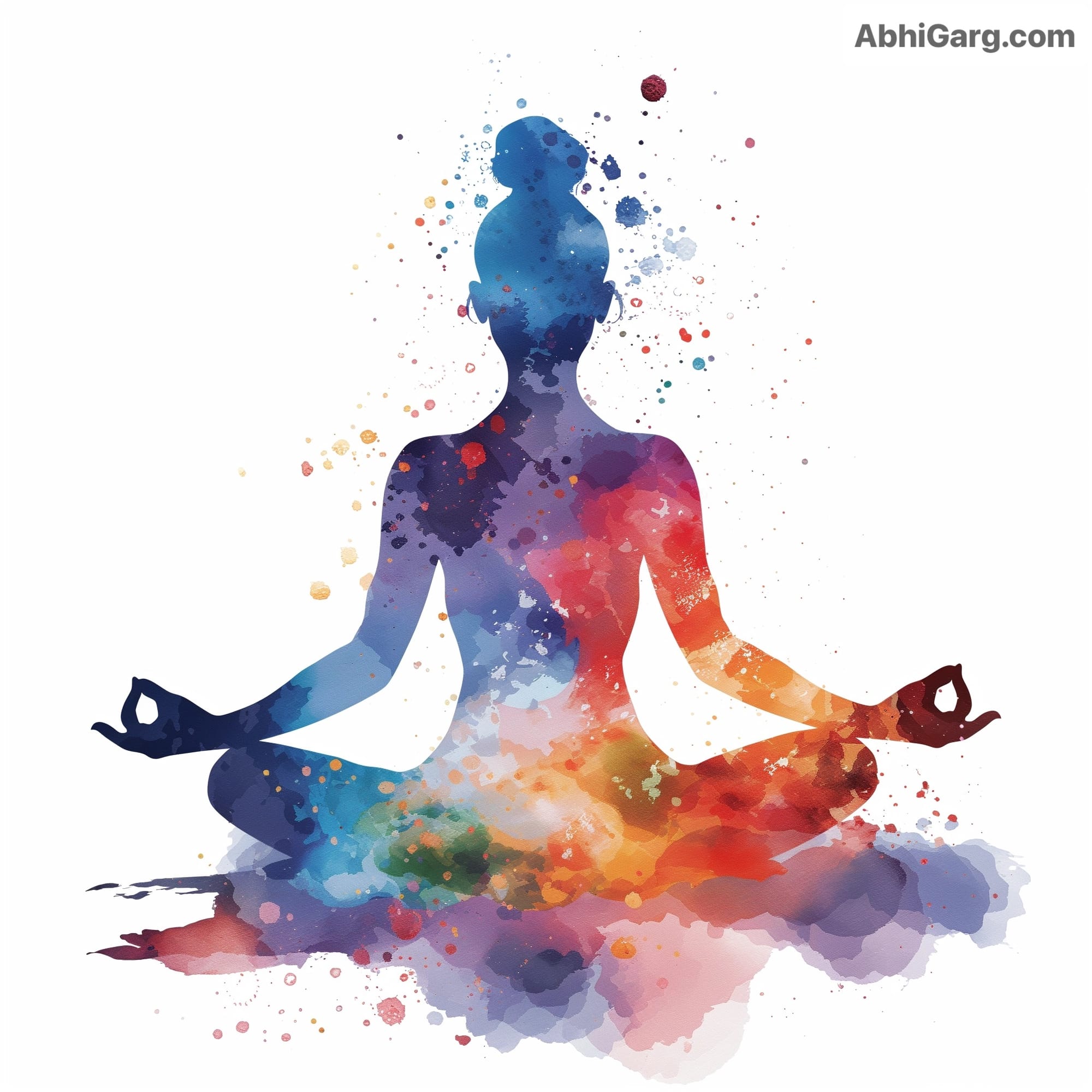
Yoga has also been shown to be an effective complementary treatment for anxiety and depression. Through regular practice, yoga can help regulate the nervous system, balance mood, and promote a sense of inner peace and emotional stability.
Pranayama (breath control) and meditation are particularly beneficial for managing anxiety and depression. Focusing on the breath and cultivating present-moment awareness help calm the mind, reduce rumination, and promote a sense of grounding and centeredness.
In addition, the physical practice of yoga can help to release tension held in the body, boost endorphins (the body's natural mood elevators), and improve self-esteem and body image. The sense of accomplishment and self-mastery that comes from regular practice can also contribute to improved mental health and emotional well-being.
Cognitive Function and Mental Clarity:
Yoga has been shown to positively affect cognitive function, including attention, memory, and executive function. Through regular practice, yoga can help to improve focus, mental clarity, and overall brain health.
Dharana (concentration) and dhyana (meditation) enhance cognitive function. Training the mind to focus on a single point, such as the breath or a mantra, these practices help to improve attention span, reduce distractibility, and promote mental clarity and sharpness.
In addition, the physical practice of yoga can help to improve blood flow to the brain, delivering oxygen and nutrients essential for optimal brain function. Combining physical movement, breath awareness, and mindfulness can also help reduce mental clutter and promote a sense of inner spaciousness and clarity.
Emotional Intelligence and Resilience:
Yoga can also help to cultivate emotional intelligence and resilience, allowing practitioners to navigate life's challenges with greater ease and equanimity. Through regular practice, yoga encourages self-awareness, self-reflection, and the development of a non-judgmental, compassionate attitude towards oneself and others.
Practices such as metta (loving-kindness) meditation and self-inquiry can help to cultivate empathy, forgiveness, and emotional balance. By observing one's thoughts and emotions with detachment and perspective, practitioners can develop greater resilience and adaptability in the face of stress and adversity.
Ultimately, the psychological benefits of yoga are rooted in its ability to promote mind-body integration, self-awareness, and inner transformation. By bringing attention to the present moment, cultivating mindfulness, and developing a deeper understanding of oneself, yoga can help to promote mental health, emotional well-being, and overall quality of life.
Yoga for Everyone: Accessibility and Adaptation
One of the most beautiful aspects of yoga is its adaptability and accessibility to people of all ages, abilities, and backgrounds. Whether you are a beginner or an advanced practitioner, young or old, flexible or stiff, there is a yoga practice that can meet you where you are and support your unique needs and goals.
Yoga for Beginners:
Starting a yoga practice can be intimidating, especially if you are new to the physical postures and philosophical concepts. However, many beginner-friendly yoga classes and resources can help you start your yoga journey confidently and easily.
Beginner yoga classes focus on foundational postures, proper alignment, and breath awareness. These classes often move at a slower pace, allowing practitioners to become familiar with the basic principles of yoga and develop a sense of comfort and safety in their bodies.
In addition, many yoga studios and online platforms offer beginner workshops, courses, and tutorials that provide a more in-depth introduction to the practice. These resources can help you learn about the history and philosophy of yoga, understand the benefits of different postures and practices, and develop a personalized practice that meets your individual needs and goals.
Yoga for Seniors:
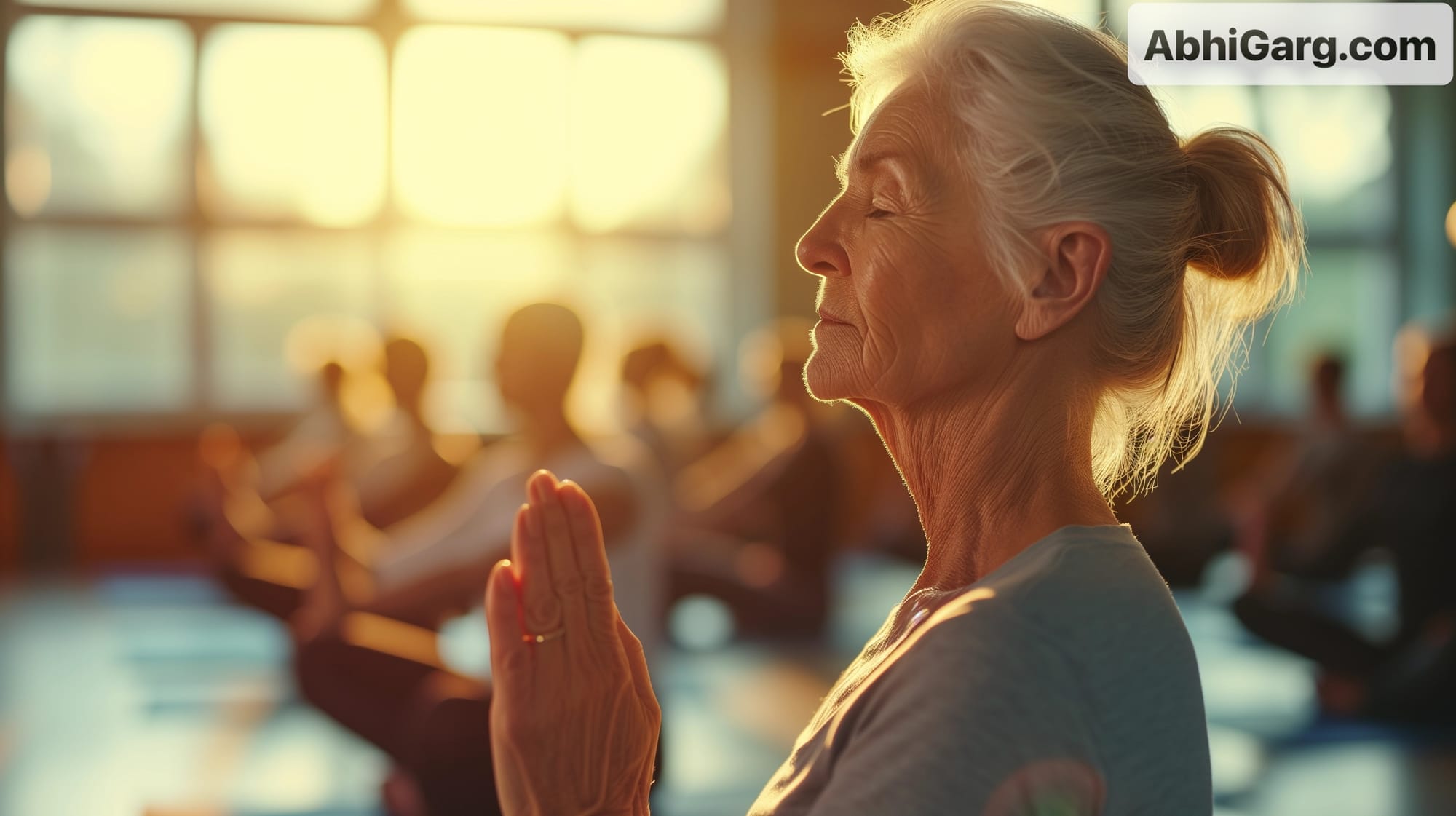
Yoga can be a wonderful practice for seniors, offering a safe and effective way to maintain physical strength, flexibility, and balance while promoting mental and emotional well-being. Many yoga postures can be modified or adapted to suit the needs of older practitioners, using props such as chairs, blocks, and straps for support and stability.
Gentle and restorative yoga classes are particularly beneficial for seniors. They focus on slow, mindful movements, deep breathing, and relaxation. These practices can help reduce stress, improve sleep, and promote inner peace and vitality.
In addition, yoga practices that emphasize balance and coordination, such as Tree Pose and Warrior III, can be particularly helpful for seniors in maintaining mobility, preventing falls, and promoting overall functional fitness.
Yoga for People with Disabilities:
Yoga can be a powerful tool for people with disabilities, offering a way to connect with the body, mind, and spirit in a supportive and empowering environment. Many yoga postures and practices can be modified or adapted to suit the needs of practitioners with different physical abilities, using props, assistive devices, and creative variations.
Wheelchair yoga, for example, is a growing field that adapts traditional yoga postures and practices for people who use wheelchairs. These classes often focus on upper body strength, flexibility, and breath awareness while promoting a sense of connection and community among practitioners.
Similarly, adaptive yoga classes are designed to meet the needs of people with various disabilities, including visual, hearing, and developmental disabilities. These classes often incorporate verbal cues, physical assistance, and other modifications to ensure every practitioner can participate fully and safely.
Ultimately, the key to making yoga accessible and inclusive is approaching the practice with openness, curiosity, and compassion. By honoring each practitioner's unique needs and experiences and being willing to adapt and modify the practice, we can create a yoga community that welcomes and empowers everyone, regardless of age, ability, or background.
Yoga in the Modern World: From Apparel to Commercialization
As yoga has gained popularity and widespread acceptance in the Western world, it has become increasingly commercialized and commodified. From yoga apparel and accessories to studio franchises and celebrity endorsements, the modern yoga industry has grown into a multi-billion-dollar market, with a wide range of products and services catering to practitioners of all levels and styles.
Yoga Apparel and Accessories:
One of the most visible aspects of the modern yoga industry is the proliferation of yoga apparel and accessories. From moisture-wicking leggings and tank tops to eco-friendly yoga mats and designer water bottles, there is no shortage of products designed to enhance the yoga experience and express one's style.
While some critics argue that the focus on fashion and consumerism detracts from yoga's spiritual and philosophical roots, others see it as a way to make the practice more accessible and appealing to a wider audience. Many yoga apparel brands, for example, are committed to using sustainable and ethical manufacturing practices and donate a portion of their profits to charitable causes.
Yoga Studios and Teacher Training Programs:
Another significant aspect of the modern yoga industry is the growth of yoga studios and teacher training programs. In recent years, there has been a proliferation of yoga studios in cities and towns worldwide, offering various classes and styles to suit different needs and preferences.

Many studios also offer teacher training programs, which allow practitioners to deepen their knowledge and skills and become certified yoga instructors. While these programs can be a valuable way to enhance one's practice and share the benefits of yoga with others, they have also been criticized for contributing to the commercialization and standardization of yoga.
Celebrity Endorsements and Social Media Influencers:
In addition to yoga apparel and studios, the modern yoga industry has also been shaped by the rise of celebrity endorsements and social media influencers. Many well-known actors, musicians, and athletes have publicly embraced yoga as part of their lifestyle and wellness routines, helping to popularize the practice and inspire others to try it for themselves.
Similarly, social media platforms like Instagram and YouTube have given rise to a new generation of yoga influencers who share their practice and teachings with millions of followers worldwide. While some of these influencers are respected teachers with years of experience and training, others have been criticized for promoting a superficial and commercialized version of yoga that prioritizes physical aesthetics over spiritual depth.
Addressing the Commercialization and Misconceptions of Modern Yoga:
As the modern yoga industry continues to grow and evolve, it is important to address the commercialization and misconceptions that have arisen along the way. While there is nothing inherently wrong with making yoga more accessible and appealing to a wider audience, it is important to remain grounded in the authentic teachings and principles of the practice.
This means recognizing that yoga is much more than a physical workout or fashion statement and that its true benefits lie in cultivating mindfulness, self-awareness, and spiritual growth. It also means discerning the teachers, products, and services we support and ensuring they align with our values and intentions.
Ultimately, the key to navigating the modern yoga world is to approach the practice with curiosity, humility, and integrity. By staying true to yoga's authentic roots while being open to new experiences and perspectives, we can continue to grow and evolve as practitioners and share the transformative power of yoga with the world.
Conclusion: Embracing Yoga in Daily Life
As we have explored throughout this comprehensive guide, yoga is a rich and multifaceted practice that offers many benefits for the body, mind, and spirit. From the physical postures and breathing techniques to the spiritual and philosophical teachings, yoga provides a holistic approach to health, well-being, and personal transformation.
Whether you are drawn to the dynamic flow of vinyasa, the gentle stillness of yin, or the spiritual depth of bhakti or raja yoga, there is a practice that can meet you where you are and support your unique needs and goals. By embracing yoga as a regular part of your daily life, you can cultivate greater strength, flexibility, balance, and peace of mind while deepening your connection to yourself and the world around you.
Integrating Yoga into Your Daily Routine:
One of the most powerful ways to experience the benefits of yoga is to make it a consistent part of your daily routine. This doesn't necessarily mean practicing for hours or attending classes every day, but rather finding ways to incorporate yoga into your life in a sustainable and nourishing way.
This might mean starting your day with a few minutes of gentle stretching and breathing exercises, taking a short break during your workday to practice a few restorative postures, or ending your evening with a calming meditation or yoga nidra practice. By making yoga a regular part of your self-care routine, you can create a sense of grounding, clarity, and resilience that can support you throughout your day.
The Ongoing Journey of Yoga:
As you continue on your yoga journey, it is important to remember that the practice is not about achieving a particular goal or endpoint but rather about cultivating a sense of presence, awareness, and compassion in each moment. Yoga is a lifelong journey of self-discovery and growth; there will always be new insights, challenges, and opportunities to explore.
By approaching your practice with a beginner's mind, a sense of curiosity and openness, and a willingness to let go of expectations and judgments, you can continue to deepen your understanding and experience of yoga, both on and off the mat. Whether you are just starting out or have been practicing for years, there is always something new to learn and discover in yoga's vast and beautiful world.
Final Thoughts:
In a world often filled with stress, distraction, and disconnection, yoga offers a powerful tool for cultivating inner peace, resilience, and connection. By embracing yoga as a holistic practice that encompasses both the physical and the spiritual, the personal and the universal, we can tap into a deep well of wisdom, strength, and compassion that can transform our lives and the world around us.
As you continue on your yoga journey, remember to be kind and patient with yourself, to honor your unique path and process, and to trust in the transformative power of this ancient and sacred practice. With dedication, curiosity, and an open heart, you can unlock yoga's full potential and discover a sense of wholeness, vitality, and joy that is your birthright.
May your yoga journey be filled with love, light, and endless possibilities.
Namaskaram.
FAQs
Q: What should I wear to a yoga class?
Wear comfortable, breathable clothing that allows you to move freely. Avoid overly loose or baggy clothing that may get in the way of your practice. Most people wear leggings or shorts and a T-shirt or tank top.
Q: Do I need to be flexible to practice yoga?
No, flexibility is not a prerequisite for practicing yoga. Yoga is a practice that helps you develop flexibility over time. It's important to honor your body's limits and not push yourself too far.
Q: What is the difference between vinyasa and hatha yoga?
Vinyasa yoga is a dynamic style that links movement with breath, flowing from one posture to another. Hatha yoga is a slower-paced practice that focuses on holding individual postures for longer periods.
Q: How often should I practice yoga to see results?
Consistency is key. Practicing yoga 2-3 times a week can help you see improvements in flexibility, strength, and mental well-being. However, even practicing once a week can provide benefits.
Q: Can yoga help with back pain?
Yes, yoga can be beneficial for managing back pain. Gentle postures that focus on stretching and strengthening the back and core muscles can help alleviate discomfort. However, it's important to consult a healthcare provider before starting a yoga practice if you have a specific back condition.
Q: Is yoga a religion?
No, yoga is not a religion. While yoga has its roots in ancient Indian philosophy, it is a practice that can be enjoyed by people of all faiths or no faith at all. Yoga is a personal journey of self-discovery and self-improvement.
Q: What is the best time of day to practice yoga?
The best time to practice yoga is whenever you can consistently fit it into your schedule. Some prefer to practice in the morning to energize and set a positive tone for the day, while others find evening practice helps them unwind and relax. Listen to your body and find a time that works best for you.
Q: Can I practice yoga if I'm pregnant?
Yes, yoga can be a wonderful practice during pregnancy. Prenatal yoga classes are designed to accommodate the changing needs of the pregnant body and can help alleviate common discomforts. However, it's important to consult your healthcare provider before starting a yoga practice during pregnancy.
Q: Is yoga enough of a workout on its own?
Yoga can be a comprehensive exercise that addresses strength, flexibility, balance, and cardiovascular health. However, the physical intensity of a yoga practice can vary depending on the style and level. Some people combine their yoga practice with other forms of exercise like walking, swimming, or strength training.
Q: What is the difference between yoga and meditation?
Yoga is a holistic practice incorporating physical postures, breathing techniques, and meditation. Meditation is a specific practice within yoga that focuses on training the mind to cultivate awareness, clarity, and relaxation. While all yoga practices include an element of meditation, not all meditation practices are yoga.
Q: Do I need to follow a specific diet to practice yoga?
No, there is no specific diet required to practice yoga. However, many yogic traditions recommend a vegetarian or plant-based diet for overall health and well-being. Ultimately, listening to your body and making nourishing and supportive choices is the most important thing.
Q: What should I do if I can't hold a pose or keep up with the class?
Remember that yoga is a personal practice, and it's important to honor your body's limits. If you can't hold a pose or keep up with the class, rest in the child's pose or any other comfortable position. You can also ask the teacher for modifications or use props to support your practice.
Q: Can yoga help with anxiety and depression?
Yes, yoga can be a helpful tool for managing symptoms of anxiety and depression. Practices like gentle asana, pranayama, and meditation can help calm the nervous system, promote relaxation, and cultivate inner peace and well-being. However, it's important to remember that yoga is not a substitute for professional mental health treatment.
Q: How do I find the right yoga teacher or studio?
Finding the right yoga teacher or studio may take some trial and error. Look for knowledgeable, compassionate teachers who create a welcoming environment. Consider trying different styles of yoga to find one that resonates with you. Many studios offer introductory deals or community classes that allow you to sample different teachers and classes before committing to a regular practice.

